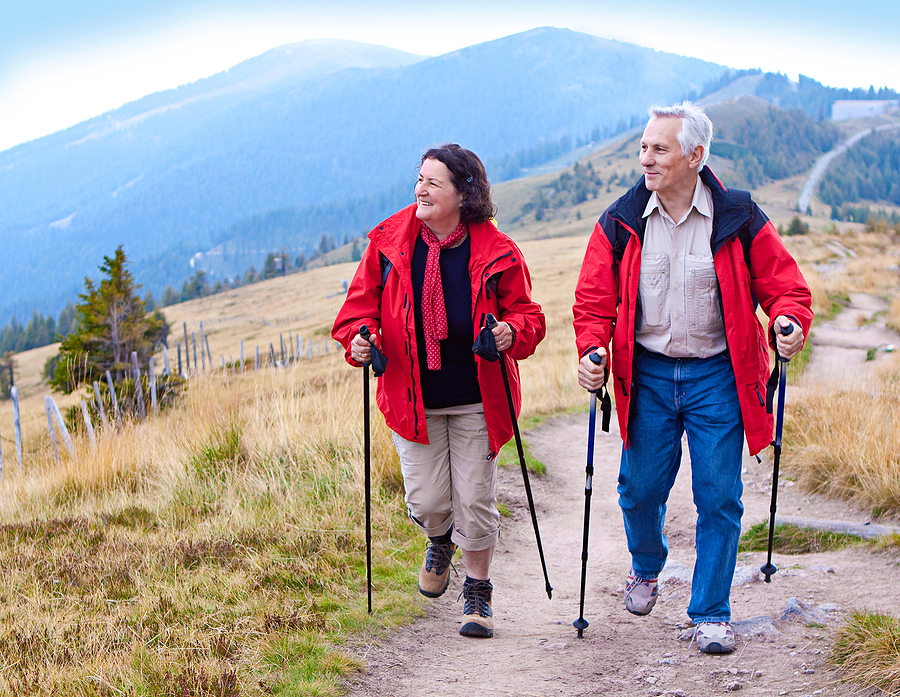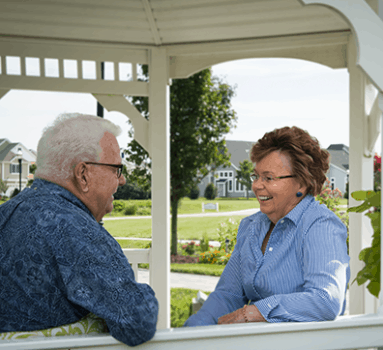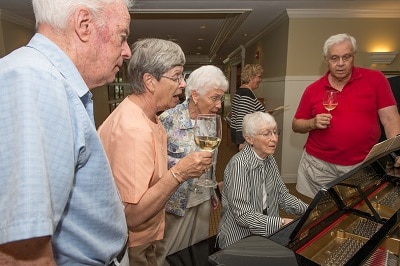How Nordic Walking Can Improve Your Walks — and Your Life

Many of us start to feel it after a mile or so — the ache in our back, knees, or hips while walking. As much as we’d like to get a few more miles in, the pain makes it tempting to stop — and that’s exactly where Nordic walking can help keep you going.
Nordic walking uses specially designed poles to take pressure off of the legs and back, allowing you to walk further and faster while gaining upper body and core strength and improving posture.
Here’s how exercise physiologist and certified Nordic walking instructor Martica Heaner explained it in an article for the Arthritis Foundation, “For people with joint injuries in their lower bodies or lower back, trekking poles can help absorb some of the landing impact with each step, particularly when going downhill.” That makes Nordic walking an ideal senior exercise — and it’s easy to get started.
A Brief History of This Nordic Exercise
Scandinavian hikers have long used ski poles to help with balance, especially when they’re on uneven ground or going downhill.
In 1996, a Finnish man named Tuomo Jantunen recognized that walking with poles was a concept that could help people universally. As the director of the Finnish Central Association for Recreational Sports and Outdoor Activities, he enlisted the help of a company in Finland called Excel and began developing the perfect walking poles. After more than two dozen prototypes, Jantunen and his team released the first Nordic walking poles in 1997 — and they’ve been gaining ground ever since.
The workout has even found its way to Hollywood. In an Instagram post that went viral for its candor and body positivity, actress Jamie Lee Curtis credited Nordic walking for getting her moving and back on track after the holidays.
The Basics of Nordic Walking
Nordic walking is just like regular walking, except with special poles and a few slight modifications.
Nordic walking poles are shorter than ordinary ski poles and have feet with a slight forward angle with an attachment that can be put on for use on sidewalks and asphalt paths. They also have arm straps that allow for a more relaxed grip.
Once you have your poles (more on that in a second), you’ll use your regular gait while leaning forward just a bit, making sure to keep your shoulders down and relaxed. You’ll strike the ground with your heel, then roll forward to the balls of your feet.
Two tips: Take strides that are a bit longer than usual and keep a light grip on the poles to keep tension out of the upper body.
To see Nordic walking in action, check out this two-and-a-half minute video by AARP illustrating the proper technique.
Finding Nordic Walking Poles
While prices range from $20 to more than $200 for Nordic walking poles, $50 is generally considered a good starting point for quality poles.
Your first decision will be whether to choose one-piece or adjustable poles. Both have their benefits.
Adjustable poles are collapsible, which makes it easy to stash them in a backpack or suitcase. (Here’s a nice pair to check out by Montem.) One-piece walking poles — like these by industry pioneer Excel — are purchased based on your height because they cannot be adjusted after purchase
Now for your second decision: poles made of aluminum or carbon fiber? Aluminum poles are heavier and more rigid, which means less give and more vibration felt in the upper body. Carbon fiber poles are generally more expensive but they are also lighter and more flexible, which makes them more durable and also more comfortable for some.
More Benefits of Nordic Walking
We already talked about how Nordic walking is easier on joints, but proponents claim there are many other possible benefits as well, including improved balance, posture, heart health, and mood. Here’s a complete rundown by the American Nordic Walking Association.
While the group makes some pretty big claims — and scientific studies are still limited in their scope — the core message makes sense. By taking pressure off of joints, Nordic walking makes it easier to be more active and stay fit. That translates into more frequent hikes or strolls through your neighborhood — and the advantages of time spent outdoors are well documented.
Hitting the Trail at The Moorings at Lewes
Located on the Delaware coast, The Moorings at Lewes offers 35 acres of opportunities, including walking paths, community ponds, a butterfly garden, a dog park, and many pleasant places to enjoy a sunny day. Indoors, you’ll find a heated pool, a fully equipped fitness center, a woodworking shop, a library, an art center, and more. See how interesting and active life can be by scheduling a visit to our campus in Lewes, Delaware.




